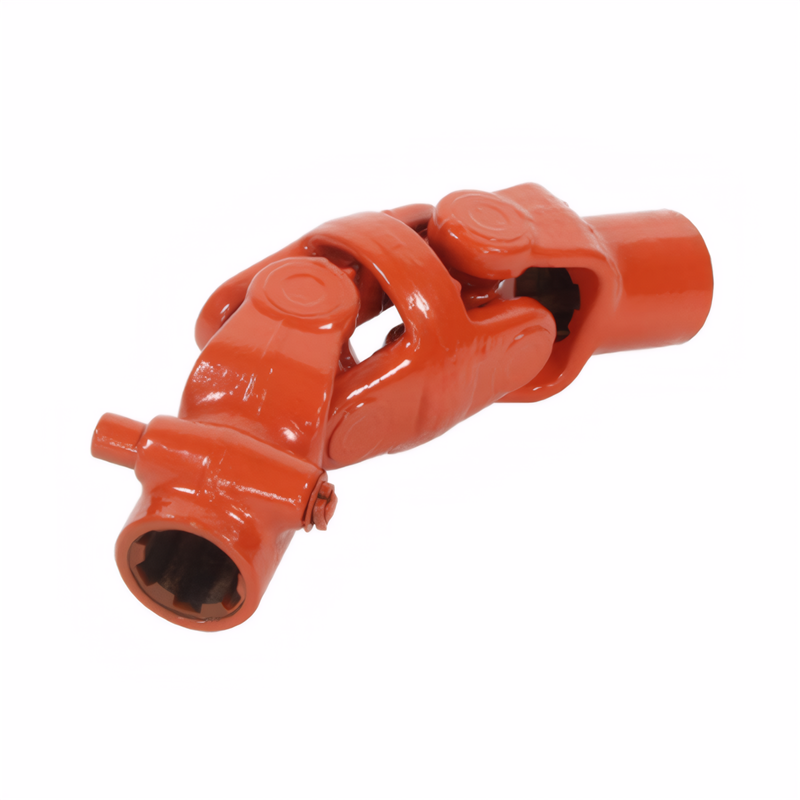The drive shaft of the front-engine, front-wheel drive model
Drive Shaft Dynamics in Front-Engine Front-Wheel-Drive Vehicles
Front-engine front-wheel-drive (FF) vehicles employ specialized drive shaft designs optimized for compact packaging and efficient power delivery. These components differ significantly from rear-wheel-drive counterparts in their structural configuration and operational characteristics.
Compact Constant-Velocity Joint Integration
FF vehicles utilize constant-velocity (CV) joints at both ends of the drive shaft to accommodate the engine's transverse mounting orientation. The inner CV joint connects to the differential output, while the outer joint interfaces with the wheel hub assembly. These joints typically employ Birfield-type designs with 6 or 8 ball tracks to maintain equal angular velocity during steering maneuvers.
Angular Range and Operating Efficiency
- Maximum steering angle capacity: 45-50 degrees
- Operating temperature range: -40°C to 120°C
- Torque transmission efficiency: 96-98% under normal loads
- Service life: Exceeds 150,000 km under standard driving conditions
The CV joints' tripod-style inner races distribute loads evenly across three rollers, reducing friction by 30% compared to traditional double-offset joints. This design enables smooth power delivery even during full-lock steering situations.
Lightweight Composite Construction
Modern FF drive shafts frequently incorporate hollow tubular designs using high-strength steel alloys or carbon fiber composites. The hollow structure reduces rotational inertia by 40% compared to solid shafts while maintaining torsional stiffness requirements. Some advanced implementations use aluminum inner cores with carbon fiber outer layers to optimize weight distribution.
Material Performance Parameters
- Tensile strength: 800-1,000 MPa for steel variants
- Specific stiffness: 200-250 GPa for carbon fiber composites
- Fatigue limit: 400-500 MPa for 10^7 cycle endurance
- Corrosion resistance: Salt spray test endurance exceeding 500 hours
The composite layers undergo automated fiber placement during manufacturing to ensure consistent 0°/±45° fiber orientation, maximizing torsional load capacity while minimizing weight. This construction method achieves a 25% weight reduction compared to conventional steel designs without compromising durability.
Integrated Vibration Damping Systems
To counteract drivetrain vibrations inherent in FF layouts, drive shafts incorporate specialized damping mechanisms. Some designs feature elastomeric couplings between the differential and inner CV joint, while others use tuned mass dampers integrated into the shaft body. These systems target specific frequency ranges (typically 50-200 Hz) to eliminate noise and harshness.
Dynamic Performance Metrics
- Natural frequency tuning range: 60-180 Hz
- Vibration attenuation: 8-12 dB reduction at critical frequencies
- Damping coefficient: 500-1,500 N·s/m depending on application
- Temperature stability: Maintains damping performance across -30°C to 100°C
The damping systems use silicone-based elastomers with variable durometer ratings (60-80 Shore A) to balance vibration absorption with torsional rigidity. Some implementations employ shape memory alloys that adjust damping characteristics based on operating temperature and load conditions.
 The inspection method for the
The inspection method for the
 Symptoms of wear of the univer
Symptoms of wear of the univer
 Analysis of the Causes of Abno
Analysis of the Causes of Abno
 The ability of the drive shaft
The ability of the drive shaft
 简体中文
简体中文 English
English
